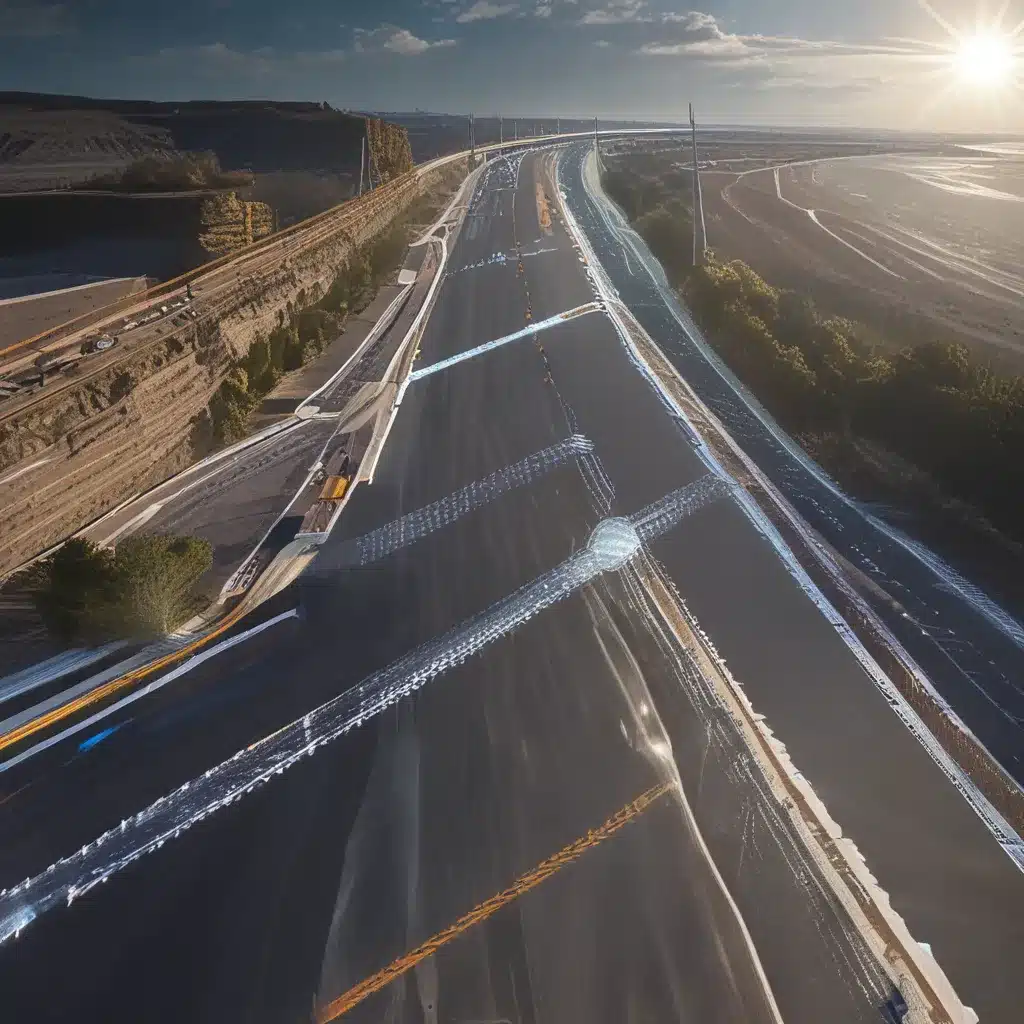
The Electrifying Potential of Solar Roads
Have you ever looked down at the pavement beneath your tires and thought, “What a waste of space!”? Well, my friends, the future of our roads is about to get a whole lot brighter – and I’m not just talking about the neon lights on your hybrid. Introducing the concept of solar highways, where the very ground we drive on becomes a canvas for harvesting the sun’s abundant energy.
Imagine a world where our roads don’t just connect us from point A to point B, but actively contribute to a more sustainable future. That’s the driving force behind innovative projects like Solar Roadways in the United States and SolaRoad in the Netherlands – pioneers who are determined to transform the way we think about transportation infrastructure.
The Dream of Solar Highways
I have to admit, when I first heard about the concept of solar roads, I was a bit skeptical. After all, how could something as mundane as a highway become a powerhouse for renewable energy? But as I dove deeper into the research, I realized that this idea has the potential to revolutionize the way we generate and distribute electricity.
The premise is simple: Instead of letting all that precious sunlight go to waste as it beats down on our asphalt thoroughfares, we can capture it using specialized photovoltaic (PV) modules embedded right into the road surface. Imagine thousands of tiny solar cells working in tandem, silently soaking up the sun’s rays and converting that energy into usable electricity.
The Challenges of Bringing Solar Roads to Life
Of course, as with any innovative concept, there are a few hurdles to overcome before we can see solar highways become a widespread reality. According to Andrew Thomson, a postdoctoral fellow at the Australian National University, the key issues revolve around cost, durability, and efficiency.
For starters, the materials used in solar roads, like thick, tempered glass panels, are significantly more expensive than traditional asphalt or concrete. As Thomson points out, “Per square metre bitumen-asphalt roads are cheaper around $5/m² than centimetre thick slabs of toughened glass around $15-20/m².” And that’s not even taking into account the energy-intensive manufacturing process required for the glass.
Then there’s the matter of durability. Roads are designed to withstand the constant pounding of heavy vehicles, not to mention the wear and tear of weather and environmental factors. As Thomson explains, “Even if the glass road surface were given a textured pattern to provide traction, it would eventually be worn away.” Smooth glass surfaces just don’t have the same grippy properties as good old asphalt.
Finally, there’s the efficiency issue. While solar roads may seem like a great way to maximize our use of available space, the reality is that they simply don’t perform as well as rooftop solar panels. Roads are often shaded, oriented in less-than-ideal directions, and prone to collecting dirt and debris – all of which can significantly reduce the amount of energy they’re able to generate.
Balancing the Pros and Cons
So, with all these challenges in mind, is the idea of solar highways really worth pursuing? Well, that’s where things get a bit tricky. On the one hand, the potential benefits are tantalizing. Just imagine the impact we could have if we were able to transform our vast network of roads and highways into massive energy-producing systems.
Solar Systems Inc., a leading provider of solar energy solutions, estimates that if we were to cover just a small fraction of the roads in the United States with solar panels, we could generate enough electricity to power millions of homes. That’s a pretty compelling argument for giving this technology a closer look.
On the other hand, as we’ve seen, the practical challenges are significant. The high costs and questionable durability of solar roads may simply make them a less viable option compared to traditional rooftop solar or ground-mounted solar farms. As Thomson points out, “For solar roadways to be effective, it needs a complete technological rethink.”
Exploring Alternative Approaches
So, if solar roads aren’t quite ready for prime time, what other options are out there? One intriguing idea is the concept of “solar-generating roofs” – essentially, installing traditional solar panels on structures that run parallel to our roads, creating a sort of elevated solar highway.
This approach has a few key advantages. First, it sidesteps the durability issues associated with embedding solar cells directly into the road surface. Second, by elevating the panels, they’re less likely to be shaded or collect debris, which can improve their overall efficiency. And finally, this setup allows for easy maintenance and replacement of the solar modules as technology continues to advance.
Another possibility is the idea of “solar-lined roads,” where traditional solar panels are installed along the edges of the highway, either on fencing or dedicated structures. This may not be as visually striking as a true solar highway, but it could still provide a significant boost to our renewable energy infrastructure.
The Future of Solar Roadways
While the dream of solar highways may not be fully realized just yet, I can’t help but be excited about the potential of this technology. As the cost of solar power continues to drop and new innovations emerge, I believe we’ll see more and more experiments and pilot projects popping up around the world.
Perhaps one day, the sight of a gleaming, electricity-generating road surface will be as common as the asphalt and concrete we’re used to today. Until then, we can take solace in the fact that the future of transportation is getting brighter – one solar panel at a time.
Who knows, maybe one day I’ll be able to charge up my electric vehicle just by driving down the street. Now that’s the kind of future I can get excited about!


